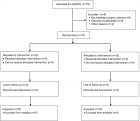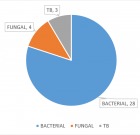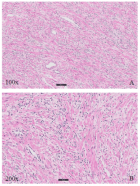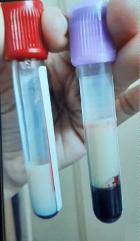Abstract
Review Article
Zn2+ Ions-Immune Virucidal activities for children and adults with preventions against 2019-nCoV and COVID-19 infection
Tsuneo Ishida*
Published: 28 July, 2020 | Volume 4 - Issue 1 | Pages: 006-014
Zinc induced pediatric preventing respiratory 2019-nCoV is required that supplementation with zinc gluconate 20 mg in Zn deficient children resulted in a nearly twofold reduction of acute lower respiratory infections as well as the time to recovery. Zinc supplementation in children is associated with a reduction in the incidence and prevalence of pneumonia. Preventing 2019-nCoV pneumonia is required that zinc supplementation alone (10 to 20 mg) for more than 3 months significantly reduces in the rate of pneumonia. zinc pediatric intake may be required to be effective range 10~20 mg/d for 2019-CoV prevention, 10~30 mg/d for reduction of COVID-19 bronchitis, and 20~30 mg/d for recovery from COVID-19 pneumonia, in which Zn2+ could bind with viral surface proteins by Zn2+ions-centered tetrahedrally coordination pattern.
On the other hand, for aults, the zinc-homeostatic immune concentration may provide a protective role against the COVID-19 pandemic, likely by improving the host’s resistance against viral infection. 50 mg of zinc per day might provide an additional shield against the COVID-19 pandemic, possibly by increasing the host resistance to viral infection to minimize the burden of the disease. In order to prevent that an outbreak of respiratory sickness caused by a novel coronavirus (COVID-19) has become a serious public threat and disrupted many lives,assessing the efficacy of FDA-approved Zn-ejector drugs such as disulfiram combined with interferon to treat COVID-19 infected patients has been proposed. The key strategies for preventing lung damages include avoiding direct lung infection, altering host-virus interactions, promoting immune responses, diluting virus concentrations in lung tissues by promoting viral migration to the rest of the body, maintaining waste removal balance, protecting heart function and renal function, avoiding other infections, reducing allergic reactions and anti-inflammatory. The interactions had been found on the binding specificity by Zn2+ ions-centered tetrahedral geometric coordination of the inhibitors against 3C and 3C-like proteases. In addition, transient zinc chelation TPEN and EPDTC have been noted as preventing virus replication.
Zinc-induced ROS production in COVID-19 respiratory ailment and pneumonia occurs both in children and adults. In children.
ROS production in zinc (Ⅱ)-immune pediatric patient with COVID-19 bronchitis and pneumonia cannot be elucidated yet. In adults, zinc induced ROS generation in pulmonary COVID-19 infected cells is that alterations of ROS-producing and scavenging pathways that are caused by respiratory viral infections are implicated in inflammation, lung epithelial disruption, and tissue damage, and, in some cases, even pulmonary fibrosis. The involvement of oxidative stress in cell deaths caused during RNA virus infection and ROS production is correlated with host cell death.
Read Full Article HTML DOI: 10.29328/journal.jcavi.1001006 Cite this Article Read Full Article PDF
Keywords:
Zinc ions immunity; Pediatric zinc intake; Pediatric and adult preventions for 2019-nCoV; COVID-19 bronchitis and pneumonia; Zn2+ ions-coordination pattern
References
- Duffy S. Why are virus mutation rates so damn high. PLOS Biology. 2018; 16: 1-6. Pubmed: https://www.ncbi.nlm.nih.gov/pmc/articles/PMC6107253
- Kumar A, Kubota Y, Chernov M, Kasuya H. Potential Role of Zinc Supplementation in Prophylaxis and Treatment of COVID-19. Med Hypotheses. 2020; 11-10. Pubmed: https://pubmed.ncbi.nlm.nih.gov/32512490/
- Cai X, Ma Y, Li S, Chen Y, Rong Z, et al. Clinical characteristics of 5 COVID-19 cases with Non-respiratory Symptoms as the First Manifestation in Children. Front Pediatr. 2020; 8: 258: 1-9. Pubmed: https://pubmed.ncbi.nlm.nih.gov/32574284/
- Palmer LD, Skaar E. Transition metals and virulence in bacteria. Annu Rev Genet. 2016; 50; 23: 67-94. Pubmed: https://pubmed.ncbi.nlm.nih.gov/27617971/
- Dhochak N, Singhal T, Kabra SK, Lodha R. Pathophysiology of COVID-19: Why Children Fare Better than Adults? Indian J Pediatr. 2020; Pubmed: https://pubmed.ncbi.nlm.nih.gov/32410003/
- Roth DE, Richard SA, Black RE. Zinc Supplementation for the Prevention of Acute Lower Respiratory Infection in Children in Developing Countries: Meta-Analysis and Meta-Regression of Randomized Trials. Int J Epidemiol. 2010; 39: 795-808. Pubmed: https://www.ncbi.nlm.nih.gov/books/NBK80596/
- Shah UH, Abu-Shaheen AK, Malik MA, Alam S, et al. The efficacy of zinc supplementation in young children with acute lower respiratory infections: A randomized double-blind controlled trial. Clin Nutr. 2013; 32: 193-199.
- Derbyshire E, Delange J. COVID-19: is there a role for immuno-nutrition, particularly in the over 65s? BMJ. Nutrition Prevention & Health. 2020; 0: 1–6. Pubmed: https://www.ncbi.nlm.nih.gov/pmc/articles/PMC7211076/
- Lassi ZS, Moin A, Bhutta ZA. Zinc supplementation for the prevention of pneumonia in children aged 2 months to 59 months. Cochrane Database Syst Rev. 2017; 2016: 1-41. Pubmed: https://www.ncbi.nlm.nih.gov/pmc/articles/PMC6463931/
- Sakulchit T, Goldman RD. Zinc supplementation for pediatric pneumonia. Child Health Update. 2017; 63: 763-765. Can Fam Physician. 2017; 63: 763-765. Pubmed: https://www.ncbi.nlm.nih.gov/pmc/articles/PMC5638472/
- Rerksuppaphol S, Rerksuppaphol L. A Randomized Controlled Trial of Zinc Supplementation in the Treatment of Acute Respiratory Tract Infection in Thai Children. Pediatr Rep. 2019; 11: 15-20. Pubmed: https://pubmed.ncbi.nlm.nih.gov/31214301/
- Malik A, Taneja DK, Devasenapathy N, Rajeshwari K. Zinc Supplementation for Prevention of Acute Respiratory Infections in Infants: A Randomized Controlled Trial. Indian Pediatr Actions. 2014; 51: 780-784. Pubmed: https://pubmed.ncbi.nlm.nih.gov/25362008
- Islam SN, Kamal MD, Rahmatullah R, Sadi SKS, Ahsan M. Serum zinc levels in children with acute respiratory infections; Association with sociodemography and nutritional status. Clinical Nutrition Experimental. 2018; 22: 11-18.
- Yunus M, Yeasmin MS, Black RE, et al. Zinc for severe pneumonia in very young children: double-blind placebo-controlled trial. Lancet. 2004; 363, Issue 9422:1683-1688. Pubmed: https://pubmed.ncbi.nlm.nih.gov/15158629/
- Qasemzadeh MJ, Fathi M, Tashvighi M. The Effect of Adjuvant Zinc Therapy on Recovery from Pneumonia in Hospitalized Children: A Double-Blind Randomized Controlled Trial. Scientifica. 2014; 2014: 694193. 1-4. Pubmed: https://www.ncbi.nlm.nih.gov/pmc/articles/PMC4052786/
- Escobedo-Monge MF, Ayala-Macedo G, Sakihara G, Peralta S. et al. Effects of Zinc Supplementation on Nutritional Status in Children with Chronic Kidney Disease: A Randomized Trial, Nutrients. 2019; 11: 2671; 1-27. Pubmed: https://www.ncbi.nlm.nih.gov/pmc/articles/PMC6893698/
- Derwand R, Scholzb M. Does zinc supplementation enhance the clinical efficacy of chloroquine/hydroxychloroquine to win todays battle against COVID-19? Medical Hypotheses. 2020; 142: 1-3.
- Yuaul X, Qian SU, Li Z, Zhang ZZ. Effect of zinc supplementation on infants with severe pneumonia. World J Pediatr. 2016; 12: 166–169. Pubmed: https://pubmed.ncbi.nlm.nih.gov/26684319/
- Rady HI, Rabie WA, Rasslan HA, El Ayadi AA. Pag Blood zinc levels in children hospitalized with pneumonia: A cross sectional study. Egyptian J Chest Dis Tuberculosis. 2013; 62: 697-700.
- Carlucci PM, Ahuja T, Petrilli C, Rajagopalan R, Jones S, et al. Hydroxychloroquine and azithromycin plus zinc vs hydroxychloroquine and azithromycin alone: outcomes in hospitalized COVID-19 patients. MedRxiv. 2020; 2020: 1-22.
- Laghari GS, Hussain Z, Taimur M, Jamil N. Therapeutic Role of Zinc Supplementation in Children Hospitalized with Pneumonia. Open Access Original Article Pubmed: https://www.ncbi.nlm.nih.gov/pmc/articles/PMC6579359/
- Khomich OA, Kochetkov SN, Bartosch B, Ivanov AV. Redox Biology of Respiratory Viral Infections. Viruses. 2018; 10: 392-419. Pubmed: https://pubmed.ncbi.nlm.nih.gov/30049972/
- Prasad AS, Bao B. Molecular Mechanisms of Zinc as a Pro-Antioxidant Mediator: Clinical Therapeutic Implications. Antioxidants. 2019; 8: 1-22. Pubmed: https://www.ncbi.nlm.nih.gov/pmc/articles/PMC6617024/
- Ayaz A. Oxidative Stress and Overview of Pediatric Disease Biomarkers. J Pediatr Biochem. 2015; 5: 8-11.
- Ishida T. Anti-Viral Vaccine Activity of Zinc(Ⅱ) for Viral Prevention, Entry, Replication, and Spreading During Pathogenesis Process. CurrTrends Biomed Engine Biosci. 2019; 19: 83-87.
- Ishida T. Review on the Role of Zn2+ Ions in Viral Pathogenesis and the Effect of Zn2+ Ions for Host Cell-Virus Growth Inhibition. Am J Biomed Sci Res. 2019; 2: 28-37.
- Lipsitch M, Kahn R, Mina MJ. Antibody testing will enhance the power and accuracy of COVID-19-prevention trials. Nat Med. 2020; 1-2. Pubmed: https://pubmed.ncbi.nlm.nih.gov/32341581/
- Razzaque MS. COVID-19 pandemic: can maintaining optimal zinc balance enhance host resistance? Preprint. 2020; 1-11.
- Gasmi A, Noor S, Tippairote T, Dadar M, Menzel A, et al. Individual risk management strategy and potential therapeutic options for the COVID-19 pandemic. Clin Immunol. 2020; 108409. Pubmed: https://www.ncbi.nlm.nih.gov/pmc/articles/PMC7139252/
- Wanga C, Lia W, Drabekb D, Okba NMA, van Haperen R, et al. A human monoclonal antibody blocking SARS-CoV-2 infection. Nat Commun. 2020; 11: 2251. Pubmed: https://pubmed.ncbi.nlm.nih.gov/32366817/
- Li F. Receptor Recognition Mechanisms of Coronaviruses: a Decade of Structural Studies. J Virol. 2015; 89: 1954-1964. Pubmed: https://pubmed.ncbi.nlm.nih.gov/25428871/
- Skalny AV, Rink L, Ajsuvakova OP, Aschner M, Gritsenko VA, et al. Zinc and respiratory tract infections: Perspectives for COVID-19 Review). Int J Mol Med. 2020; 46: 17-26. https://pubmed.ncbi.nlm.nih.gov/32319538/
- Derbyshire E, Delange J. COVID-19: is there a role for immunonutrition, particularly in the over 65s? BMJ Nutrition, Prevention & Health. 2020; 0: 1- 6. Pubmed: https://www.ncbi.nlm.nih.gov/pmc/articles/PMC7211076/
- Gupta MK, Vemula S, Donde R, Gouda G, Behera L, et al. In-silico approaches to detect inhibitors of the human severe acute respiratory syndrome coronavirus envelope protein ion channel. J Biomol Struct Dyn. 2020; 739-1102. Pubmed: https://pubmed.ncbi.nlm.nih.gov/32238078/
- Hoffmann M, Kleine-Weber H, Schroeder S, Krüger N, Herrler T, et al. SARS-CoV-2 Cell Entry Depends on ACE2 and TMPRSS2 and Is Blocked by a Clinically Proven Protease Inhibitor. Cell. 2020; 181: 271-280. Pubmed: https://pubmed.ncbi.nlm.nih.gov/32142651/
- Te Velthuis AJW, van den Worm SHE, Sims AC, et al. Zn2+ inhibits coronavirus and arterivirus RNA polymerase activity in vitro and zinc ionophores block the replication of these viruses in cell culture. PLOS Pathogen. 2010; 6: 1-10. Pubmed: https://www.ncbi.nlm.nih.gov/pmc/articles/PMC2973827/
- Sargsyan K, Chen T, Grauffel C, Lim C. Identifying COVID-19 Drug-Sites Susceptible To Clinically Safe Zn-ejector Drugs Using Evolutionary /Physical Principles. 2020; 1-10.
- Derwand R, Scholz M. Does zinc supplementation enhance the clinical efficacy of chloroquine/hydroxychloroquine to win todays battle against COVID-19? 2020; 142: 109815. Pubmed: https://pubmed.ncbi.nlm.nih.gov/32408070/
- Noeparast A, Verschelden G. Can Zinc correction in SARS-CoV-2 patients improve treatment outcomes? 2020; 1-14.
- Nieto-Torres JL, De Diego ML, Verdia-Baguena C, Jimenez-Guardeño JM, Regla-Nava JA, et al. Severe acute respiratotry syndrome coronavirus envelope ion channel activity poromotes virus fitness and pathogenesis. PLOS pathogens. 2014; 10: 1-19. Pubmed: https://www.ncbi.nlm.nih.gov/pmc/articles/PMC4006877/
- Jin YH, Cai L, Cheng ZS, Cheng H, Deng T, et al. A rapid advice guideline for the diagnosis and treatment of 2019 novel coronavirus (2019-nCoV) infected pneumonia (standard version). Mil Med Res. 2020; 7: 1-23. Pubmed: https://pubmed.ncbi.nlm.nih.gov/32029004/
- Wu J, Zha P. Preventive, Mitigating and Treatment Strategies for Containing or Ending The COVID-19 Pandemic. 2020; 1-38.
- Wu J, Zha P. Treatment Strategies for Reducing Damages to Lungs In Patients with Coronavirus and Other Infections. 2020; 1-31.
- Cuevas UE, Koyanagi A. Zinc and infection: a review. Annals of Tropical Paediatrics. 2005; 25: 149–160.
- Kar M, Khan NH, Panwar A, Sachendra S. Bais, et al. Zinc Chelation Specifically Inhibits Early Stages of Dengue Virus Replication by Activation of NF-κB and Induction of Antiviral Response in Epithelial Cells. Front Immunol. 2019; 1 10: 2347. Pubmed: https://pubmed.ncbi.nlm.nih.gov/31632411/
- Lee CC, Kuo CJ, Ping T, et al. Structural Basis of Inhibition Specificities of 3C and 3C-like Proteases by Zinc-Coordinating and Peptidomimetic Compounds. J Biol Chem. 2009; 284: 7646–7655. Pubmed: https://pubmed.ncbi.nlm.nih.gov/19144641/
- Ghaffari H, Tavakoli A, Moradi A, Tabarraei A, et al. Inhibition of H1N1 influenza virus infection by zinc oxide nanoparticles: another emerging application of nanomedicine. J Biomed Sci . 2019; 26: 1-10. Pubmed: https://pubmed.ncbi.nlm.nih.gov/31500628/
- Derouiche S. Zinc Supplementation Prevents the Complications of COVID-19 Infection in Cancer Patients. Asian Pac J Cancer Care, 2020; 5(Suppl 1): 131-141.
- Reshi ML, Su YC, Hong JR. RNA Viruses: ROS-Mediated Cell Death. International Journal of Cell Biology. 2014; 2014: 1-16. Pubmed: https://www.ncbi.nlm.nih.gov/pmc/journals/1119/
Figures:
Similar Articles
-
Zn2+ Ions-Immune Virucidal activities for children and adults with preventions against 2019-nCoV and COVID-19 infectionTsuneo Ishida*. Zn2+ Ions-Immune Virucidal activities for children and adults with preventions against 2019-nCoV and COVID-19 infection. . 2020 doi: 10.29328/journal.jcavi.1001006; 4: 006-014
Recently Viewed
-
Prediction of neonatal and maternal index based on development and population indicators: a global ecological studySedigheh Abdollahpour,Hamid Heidarian Miri,Talat Khadivzadeh*. Prediction of neonatal and maternal index based on development and population indicators: a global ecological study. Clin J Obstet Gynecol. 2021: doi: 10.29328/journal.cjog.1001096; 4: 101-105
-
A Genetic study in assisted reproduction and the risk of congenital anomaliesKaparelioti Chrysoula,Koniari Eleni*,Efthymiou Vasiliki,Loutradis Dimitrios,Chrousos George,Fryssira Eleni. A Genetic study in assisted reproduction and the risk of congenital anomalies. Clin J Obstet Gynecol. 2021: doi: 10.29328/journal.cjog.1001095; 4: 096-100
-
Leiomyosarcoma in pregnancy: Incidental finding during routine caesarean sectionToon Wen Tang*,Phoon Wai Leng Jessie. Leiomyosarcoma in pregnancy: Incidental finding during routine caesarean section. Clin J Obstet Gynecol. 2021: doi: 10.29328/journal.cjog.1001094; 4: 092-095
-
Adult Neurogenesis: A Review of Current Perspectives and Implications for Neuroscience ResearchAlex, Gideon S*,Olanrewaju Oluwaseun Oke,Joy Wilberforce Ekokojde,Tolulope Judah Gbayisomore,Martina C. Anene-Ogbe,Farounbi Glory,Joshua Ayodele Yusuf. Adult Neurogenesis: A Review of Current Perspectives and Implications for Neuroscience Research. J Neurosci Neurol Disord. 2024: doi: 10.29328/journal.jnnd.1001102; 8: 106-114
-
Late discover of a traumatic cardiac injury: Case reportBenlafqih C,Bouhdadi H*,Bakkali A,Rhissassi J,Sayah R,Laaroussi M. Late discover of a traumatic cardiac injury: Case report. J Cardiol Cardiovasc Med. 2019: doi: 10.29328/journal.jccm.1001048; 4: 100-102
Most Viewed
-
Evaluation of Biostimulants Based on Recovered Protein Hydrolysates from Animal By-products as Plant Growth EnhancersH Pérez-Aguilar*, M Lacruz-Asaro, F Arán-Ais. Evaluation of Biostimulants Based on Recovered Protein Hydrolysates from Animal By-products as Plant Growth Enhancers. J Plant Sci Phytopathol. 2023 doi: 10.29328/journal.jpsp.1001104; 7: 042-047
-
Sinonasal Myxoma Extending into the Orbit in a 4-Year Old: A Case PresentationJulian A Purrinos*, Ramzi Younis. Sinonasal Myxoma Extending into the Orbit in a 4-Year Old: A Case Presentation. Arch Case Rep. 2024 doi: 10.29328/journal.acr.1001099; 8: 075-077
-
Feasibility study of magnetic sensing for detecting single-neuron action potentialsDenis Tonini,Kai Wu,Renata Saha,Jian-Ping Wang*. Feasibility study of magnetic sensing for detecting single-neuron action potentials. Ann Biomed Sci Eng. 2022 doi: 10.29328/journal.abse.1001018; 6: 019-029
-
Pediatric Dysgerminoma: Unveiling a Rare Ovarian TumorFaten Limaiem*, Khalil Saffar, Ahmed Halouani. Pediatric Dysgerminoma: Unveiling a Rare Ovarian Tumor. Arch Case Rep. 2024 doi: 10.29328/journal.acr.1001087; 8: 010-013
-
Physical activity can change the physiological and psychological circumstances during COVID-19 pandemic: A narrative reviewKhashayar Maroufi*. Physical activity can change the physiological and psychological circumstances during COVID-19 pandemic: A narrative review. J Sports Med Ther. 2021 doi: 10.29328/journal.jsmt.1001051; 6: 001-007

HSPI: We're glad you're here. Please click "create a new Query" if you are a new visitor to our website and need further information from us.
If you are already a member of our network and need to keep track of any developments regarding a question you have already submitted, click "take me to my Query."

















































































































































